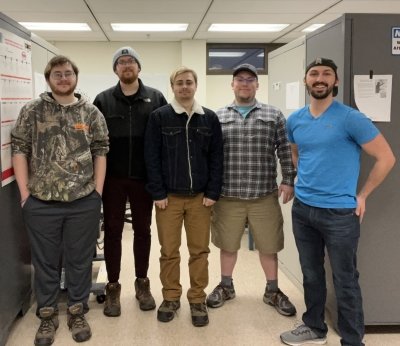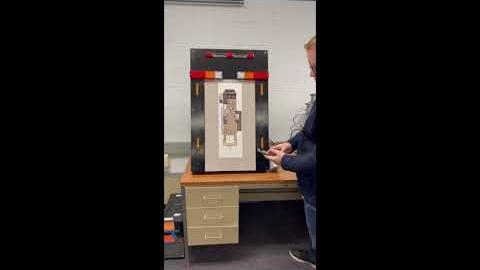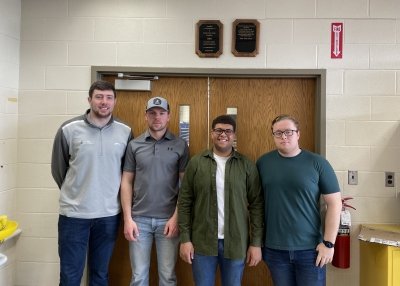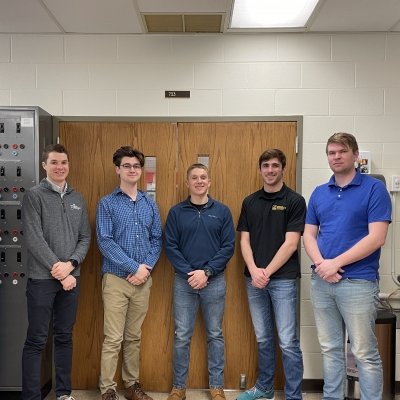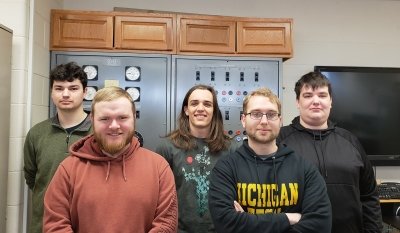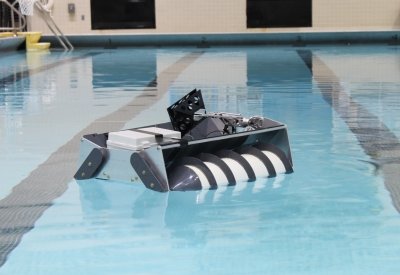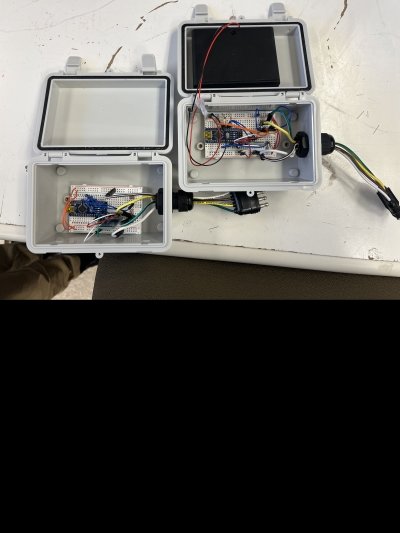204: Audio Enhancement for Smoke and Carbon Monoxide Detectors
Traditional smoke and carbon monoxide detectors will emit an audible “chirp” when the battery goes below a certain voltage. It is often difficult to determine exactly which smoke detector is making this chirp. Our team’s goal is to create a smoke detector that will emit its own unique sound when it reaches the low voltage threshold, this way it will be very easy to determine exactly which smoke detector in the building needs to have a new battery.
205: Automated Vacuum Control for Thin Film Deposition
Our project goal is to automate the process of operation of the vacuum machine that controls the thin-film-deposition chamber in the MFF facility lab. The vacuum machine is used to bring the atmosphere level in the main chamber down to vacuum pressure, or up to atmosphere pressure. The process is currently completely manual, time-consuming, and confusing for first time users. Our work is focused on creating a new control system that is efficient and user friendly, with a touchscreen graphical user interface. The control system will be enclosed in an electrical box consisting of an Arduino Mega board, a signal conditioner PCB, a relay module, and a power supply.
210: Camper Security and Ambient Light Device
Our team developed a device that connects to a standardized 7-way RV plug, allowing the lights on the RV to be controlled by a Bluetooth-enabled device, such as a mobile phone. Our device enables lights to be controlled by a variety of features such as personal control, day/night schedule, musical light shows, and person detection. The project is currently in its third stage. During this stage, our team is working on creating a functional PCB and enclosure that would be ready to sell to consumers.
217: Drone Video to Cell Tower
The goal of our project is to develop a transmitter that can be carried on a small drone and exfiltrate drone video to a commercial cell phone network directly through a cellular tower. Transmitting video over commercial cellular networks will allow a drone to successfully transmit data without adversaries detecting any “special” or out-of-the-ordinary signals emitting from the drone. The team first developed a working prototype from off-the-shelf components before designing a custom, streamlined board that utilizes custom software.
223: Low Cost Power Electronic Controller
Our project goal is to develop a lost-cost and portable alternative to the dSPACE control system used in the Michigan Tech’s SB35 lab located in the EERC building. The dSPACE controller and software package now in use is very expensive and uses a minimal amount of the controller's full functionality. It is also large and cumbersome, requiring a desktop PC and large breakout board to operate. The solution to this issue is to replace the dSPACE system with a microcontroller capable of being operated via Simulink, and able to perform the same lab functions as the dSPACE controller.
224: Movable Bookshelf Network
The MTU library has multiple banks of bookshelves on the garden level that are mechanized, collapsing and opening up at the request of the user. We are working with the Blue Marble Security Enterprise to overhaul the system that controls these shelves to be more cost effective. Our team is responsible for networking and communication between the shelves in addition to error reporting through an LCD screen. Largely, we are developing all of the software these shelves will be running.
225: Equipment Checkout Station
Our objective is to eliminate the need for faculty in the ECE Department at Michigan Tech to manually enter student and lab equipment information. We are developing a system that utilizes barcode scanners, which directly enter the data into an existing ECE Department database.
240: Waterfowl Retrieval System
Our project goal is to create a replacement for a dog in order to retrieve downed waterfowl in areas that are too dangerous due to alligators or other animals that pose a threat to the life of a dog. This design must be innovative as well as implement partial autonomy while successfully completing the task of bringing ducks back to a hunter.
242: Wireless Tail Lights
The goal of the Wireless Tail Lights is to create a quick, easy, and temporary tail light solution for trailers that have broken, degraded, or no tail lights so that they can drive safely on the road. The project is designed with off the shelf parts and was made so it can be accustomed to many different types of trailers.

